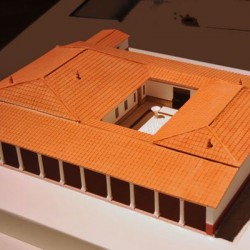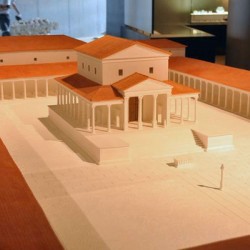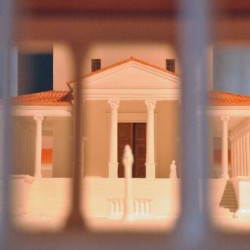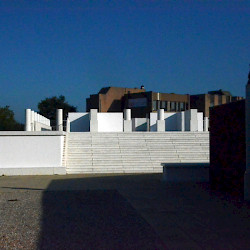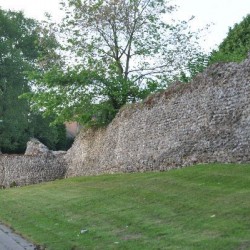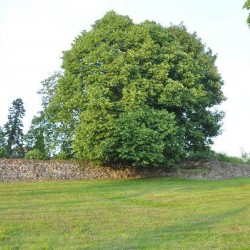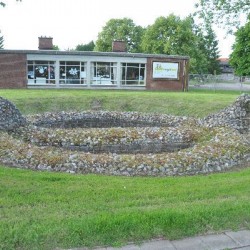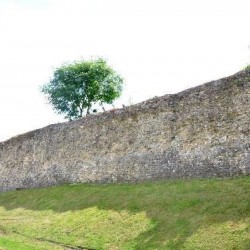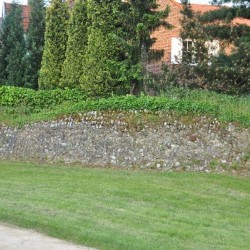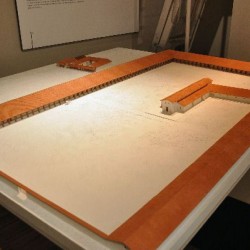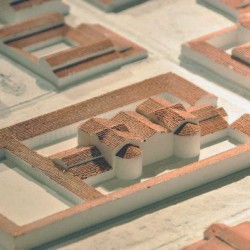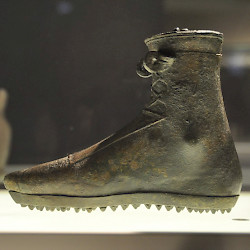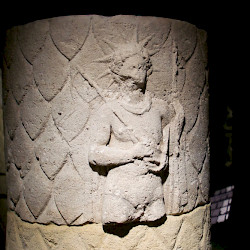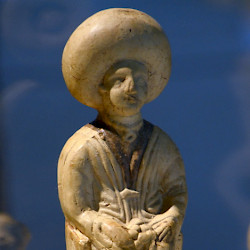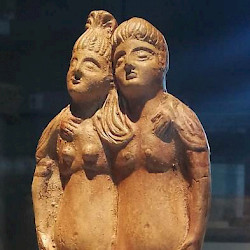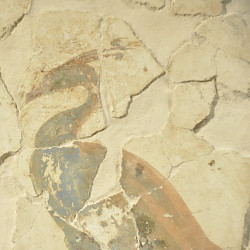Atuatuca (Tongeren)
Q1863929Atuatuca: provincial town in Gallia Belgica, modern Tongeren.
![Inscription mentioning the Mun[icipium] Tung[rorum]](/site/assets/files/2381/tong_mun.200x0-is-pid1180.jpg)
Although "Atuatuca" is the name of the location of Julius Caesar's defeat against Ambiorix, king of the Eburones, in 54 BCE, it is not likely that the site of the later city is identical to the site of Caesar's defeat. The first archaelogically attested occupation dates back to c.30 BCE; there is no evidence for earlier occupation. The first inhabitants of the civil settlement belonged to a tribe called Tungri, which seems to have replaced the Eburones. It remains possible, though, that the town started as a military settlement (after all, this is the place where an ancient road crossed the river Jeker), but evidence is still lacking.
At the beginning of our era, Atuatuca started to look like a Roman town, with a gridiron-like lay-out, paved roads and city houses - at first made of wood, later of bricks. There is a tantalizing inscription which mentions the presence during the reign of Tiberius or Caligula of soldiers of III Cyrenaica at Tongeren - remarkable, because this legion was garrisoned at Alexandria. Although the town suffered from the Batavian revolt (69-70), it flourished until the third century.
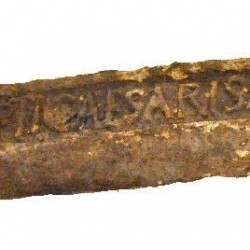 Tongeren, Lead bar with the name of the emperor Tiberius |
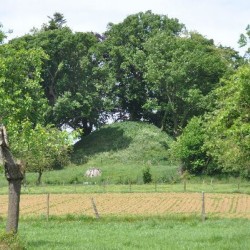 The tumulus of Herderen, east of Tongeren. |
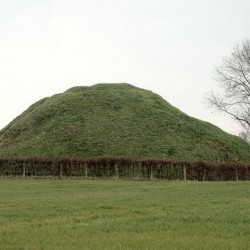 Koninksem, Tumulus |
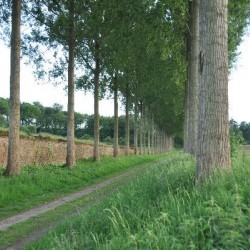 Tongeren's aqueduct: a dike (from left to right) |
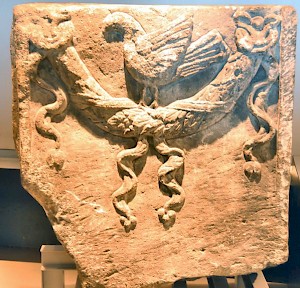
In the second century, Tongeren is for the first time called a municipium. Too much has been made of this. It is true that in the second century CE, many Roman towns north of the Alps start calling themselves municipia, and this has often been interpreted as some sort of special status that signified the town's successful romanization. It no longer was a mere civitas, a word that means both "town" and "tribe", but had been recognized as a real Roman city. Unfortunately, this nice theory is contradicted by the simple fact that a municipium is by definition a town that has kept its ancestral customs and laws.note Saying that the Roman government gave a town the right to live according to its ancient customs is simply a contradiction in terms. The easiest explanation for the rise of the name municipium is that the word had no technical meaning, but was recognized as ancient. In the second century, when the use of archaisms became popular, towns in the Latin word started to rename themselves. The Municipium Tungrorum was, therefore, linguistically part of the Roman world.
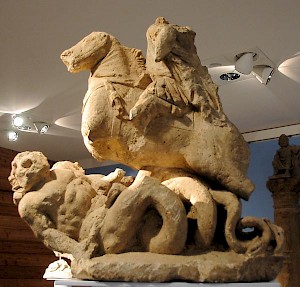
The walls that surrounded Tongeren were impressive: six meters high, two meters wide and four kilometers long. Built by the emperors Trajan and Hadrian, they were larger than those of the provincial capital of Germania Inferior, Cologne.
A minor mystery is why these fortifications were erected at this time, because the second century was an age of tranquility and peace. That the walls had no real military function is suggested by the fact that there was a granary outside the walls.
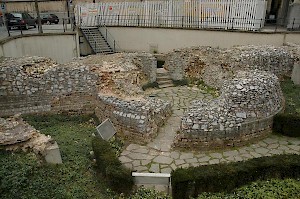
Tongeren also had a medicinal source, several temples, and a Forum that was more or less on the site of the modern central square (with a nineteenth-century statue of Ambiorix). A special object discovered in Tongeren is the statue on top of a large column, which showed the supreme god Jupiter, seated on a horse, fighting with a giant. Several columns of this type are known from the northwest of the Roman empire. They are unusual, because in Greece and Italy, Jupiter is never depicted as a horseman. The Germanic supreme god Wodan, however, sometimes is. It is probable that the monument at Tongeren is influenced by an earlier, non-Roman example.
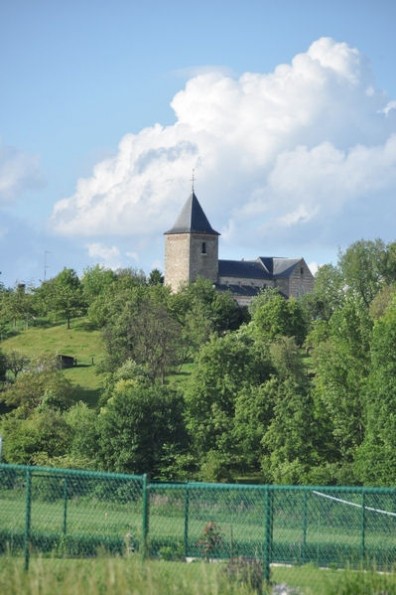
In the fourth century, Tongeren's walls were too wide and smaller but heavier walls were built, fortified by the circular towers that are characteristic for this age. This phenomenon is also known from other towns in the region, such as Xanten. However, the central square (the Forum) remained in use, and - in fact - still is. The town was used by soldiers from a mounted army unit, which may have included the future emperor Diocletian. Nearby Maastricht gradually replaced Tongeren as the main regional center.
In the fourth century, the basilica near the Forum was changed into a Christian church by bishop Servatius. It was one of the first Christian churches in the Low Countries; the Teseum is one of the most splendid excavations in the Low Countries.
Another Christian sanctuary is the church of Berg, 2¼ kilometer east of Tongeren along the road to Maastricht, which is probably built over an older, pagan sacred precinct. The presence of a modern town makes excavation difficult, but the Gallo-Romeins Museum at Tongeren is one of the most beautiful and interesting museums in the Low Countries.
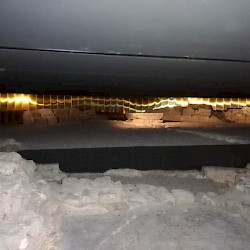 Tongeren, Basilica, Apse |
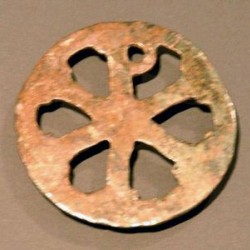 Tongeren, Pendant with chi-rho sign, probably made in Trier. |
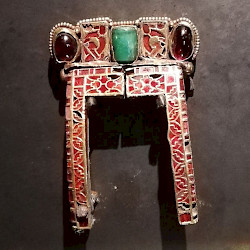 Tongeren, Merovingian buckle |
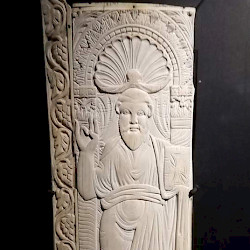 Tongeren, Byzantine ivory of Saint Paul |
